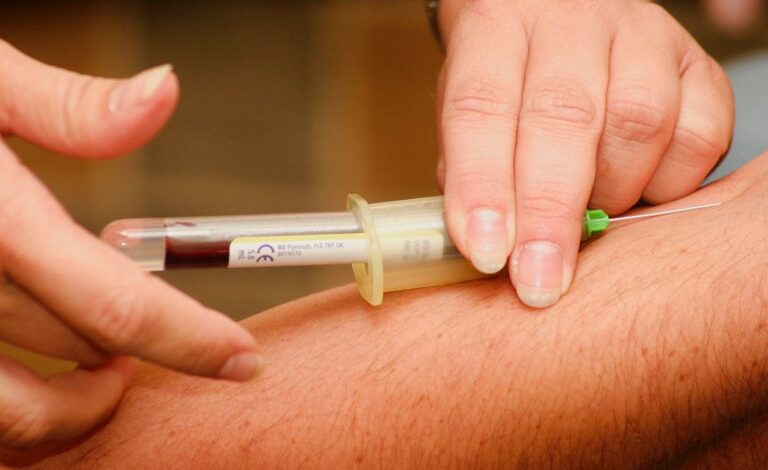
Drawing blood without gloves is a practice that involves collecting blood samples from patients without the use of protective gloves. This procedure is governed by strict guidelines and regulations to ensure the safety of both healthcare workers and patients. In this discussion, we will explore the circumstances under which it is allowed to draw blood without gloves, the risks associated with this practice, and the precautions that must be taken to minimize those risks.
Drawing blood without gloves may be permitted in certain situations, but it is important to emphasize that these situations are relatively rare and should be approached with caution. In general, the use of gloves during blood collection is a fundamental safety measure in healthcare settings. Gloves serve as a barrier to prevent the transmission of infectious diseases, protect healthcare workers from exposure to potentially contaminated blood, and reduce the risk of cross-contamination between patients. Therefore, healthcare professionals are strongly encouraged to wear gloves during blood collection to maintain a safe and hygienic environment.

However, there are specific circumstances where healthcare providers may consider drawing blood without gloves:
- Patient Allergies: In some cases, patients may have allergies to latex or other glove materials. Healthcare providers must be aware of any patient allergies and take appropriate precautions to ensure their safety. If a patient is allergic to gloves, alternative measures such as non-latex gloves or skin protection barriers should be used.
- Emergency Situations: In life-threatening emergencies where there is no time to don gloves, healthcare providers may need to draw blood without them. In such cases, the immediate need to obtain blood for diagnostic purposes or to administer life-saving treatments takes precedence over glove use. However, healthcare professionals should wash their hands thoroughly before and after the procedure and take additional precautions after the emergency situation is stabilized.
- Patient Consent: In some instances, patients may provide informed consent to have their blood drawn without gloves, especially when they are fully aware of the risks involved. This consent should be documented, and healthcare providers should still take precautions to minimize the risk of infection.
- Pediatric Patients: Drawing blood from pediatric patients can be challenging due to their smaller veins. In certain situations, healthcare providers may choose to use their bare hands when dealing with young children to ensure a more gentle and precise blood draw. However, this should be done with utmost care and following strict aseptic techniques.

While there are exceptions to the use of gloves during blood collection, it is essential to recognize the potential risks associated with drawing blood without gloves. These risks include:
- Infection Transmission: The most significant concern is the potential transmission of infectious diseases. Bloodborne pathogens, such as HIV, hepatitis B, and hepatitis C, can be transmitted through contact with contaminated blood. Gloves act as a barrier to protect healthcare workers from such infections.
- Cross-Contamination: Without gloves, there is an increased risk of cross-contamination, where blood from one patient could inadvertently come into contact with surfaces or equipment, posing a risk to others.
- Healthcare Worker Safety: Drawing blood without gloves also puts healthcare workers at risk of exposure to sharps injuries, which can result in the transmission of bloodborne pathogens.
To mitigate these risks when drawing blood without gloves in exceptional circumstances, healthcare providers should follow strict protocols:
- Hand Hygiene: Thorough hand washing before and after the procedure is crucial. Healthcare providers should use soap and water or an alcohol-based hand sanitizer to ensure their hands are clean and free of potential contaminants.
- Infection Control Measures: Even without gloves, standard infection control measures such as using clean, sterile equipment, and disinfecting surfaces are essential to prevent contamination.
- Training and Education: Healthcare workers should receive proper training on when and how to draw blood without gloves, as well as the risks involved. This education helps ensure they make informed decisions and take necessary precautions.
- Documentation: In situations where drawing blood without gloves is necessary, healthcare providers should document the rationale, patient consent (if applicable), and any other relevant information to maintain a record of the procedure.

In conclusion, drawing blood without gloves is generally discouraged in healthcare settings due to the significant risks associated with the practice, including the transmission of infectious diseases and cross-contamination. However, there are exceptional circumstances, such as patient allergies, emergencies, and pediatric patients, where this practice may be allowed. In such cases, strict adherence to infection control measures, hand hygiene, and proper documentation is essential to minimize the associated risks. Healthcare professionals must prioritize patient and healthcare worker safety while making informed decisions regarding the use of gloves during blood collection.



